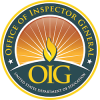Our objective was to describe the extent to which the Federal Student Aid office (FSA) identifies individuals who belong to underserved communities and performs outreach to those identified individuals. We found that FSA provided general outreach to individuals, some of whom were part of underserved communities, and reached such individuals through several FSA offices and through its partnerships with different organizations. Although FSA performed outreach through various methods, its outreach was constrained by its limited ability to identify underserved individuals. Specifically, FSA’s direct outreach was provided to its current customers and the Free Application for Federal Student Aid collected only limited demographic information that could be used to identify applicants as individuals from underserved communities. Consequently, FSA could improve its outreach to underserved communities by evaluating its outreach practices, coordinating outreach efforts amongst its different offices, and utilizing demographic data to identify and conduct outreach to individuals in underserved communities.
Report File
Date Issued
Submitting OIG
Department of Education OIG
Other Participating OIGs
Department of Education OIG
Agencies Reviewed/Investigated
Department of Education
Components
Federal Student Aid
Report Number
I22NY0092
Report Description
Report Type
Inspection / Evaluation
Agency Wide
Yes
Number of Recommendations
4
Questioned Costs
$0
Funds for Better Use
$0
Report updated under NDAA 5274
No


